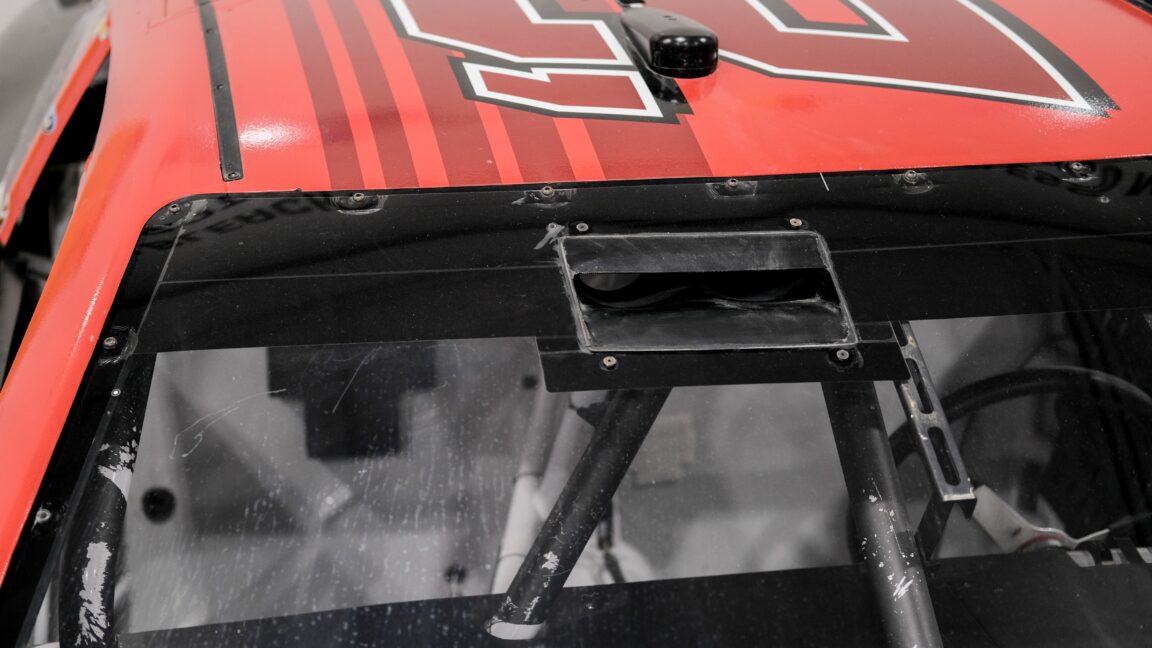ARSTECHNICA.COM
How NASCAR and its teams are embracing 3D printing
shift-p How NASCAR and its teams are embracing 3D printing Both teams and the sport's organizer are using additive manufacturing for parts. Jonathan M. Gitlin Jan 2, 2025 11:50 am | 13 The SAF printed duct is installed on all NASCAR cars in production. Credit: Stratasys The SAF printed duct is installed on all NASCAR cars in production. Credit: Stratasys Story textSizeSmallStandardLargeWidth *StandardWideLinksStandardOrange* Subscribers only Learn moreCarbon fiber, aluminum, maybe the odd bit of titanium here or there: These are the materials we usually expect race cars to be made of. Now you can start adding thermoplastics like Ultem to the list. Additive manufacturing has become a real asset in the racers toolbox, although the technology has actually been used at the track longer than you might think."Some people think that 3D printing was invented last year," said Fadi Abro, senior global director of automotive and mobility at Stratasys. The company recently became NASCAR's official 3D printing partner, but it has a relationship with one of the teamsJoe Gibbs Racingthat stretches back two decades."Now the teams only have certain things that they can touch in the vehicle, but what that does is it makes it so that every microscopic advantage you can get out of that one tiny detail that you have control over is so meaningful to your team," Abro said.Currently, JGR has five printers, which it uses in a variety of applications. Some are common to other industriesadditive manufacturing is a good way to quickly develop new prototypes, as well as tooling and fixtures. But the team also prints parts that go straight onto the race car, like housings, ducts, and brackets."These are elements that are really integral for the vehicle to be on the track. If there are changes they want to make, they throw it to the printer, it prints overnight, and you have a part that can go on a track that's specific to that track. So that gives them a competitive advantage," Abri said.Track-specific parts are nothing new in motorsport, but the speed at which teams can make and iterate them is. 3D printers at NASCAR's R&D center in Charlotte, North Carolina. Stratasys 3D printers at NASCAR's R&D center in Charlotte, North Carolina. Stratasys A 3D-printed laptop holder, used to hold a laptop for data logging during test sessions. Stratasys A 3D-printed laptop holder, used to hold a laptop for data logging during test sessions. Stratasys The top row has aero winglets, which are placed on the front bumper. The parts on the next shelf are to improve the front fender's aerodynamics. The third shelf from the top is for side aerodynamic features and the floor of the car. The bottom shelf is a 3D-printed driver seat insert. Stratasys The top row has aero winglets, which are placed on the front bumper. The parts on the next shelf are to improve the front fender's aerodynamics. The third shelf from the top is for side aerodynamic features and the floor of the car. The bottom shelf is a 3D-printed driver seat insert. Stratasys A 3D-printed laptop holder, used to hold a laptop for data logging during test sessions. Stratasys The top row has aero winglets, which are placed on the front bumper. The parts on the next shelf are to improve the front fender's aerodynamics. The third shelf from the top is for side aerodynamic features and the floor of the car. The bottom shelf is a 3D-printed driver seat insert. Stratasys Parts that aren't expected to have a rough life are printed from polymers like ASA and ABS. Components that are expected to experience a lot of forcelike an air duct or aerodynamic louversmight use a thermoplastic filled with chopped-up carbon fiber, which adds strength for very little weight penalty, just the way it does in other composite materials. Some parts of a race car can get more than a little warm, so bits that are intended for use in the engine bay or by the brakes will use a different thermoplastic called Ultem."And then they had a unique use case where there's some of this tubing that NASCAR came back and said, 'Hey, we need you to make that tubing out of clear material because we don't know what the teams are doing inside of [it],'" he said. For that, JGR turned to "a polycarbonate material that prints in a semi clearI would not call it like lens clear, but it was clear enough for this application where you can see that there isn't anything sinister going on," Abri said.NASCAR, like most racing series, mandates the use of many spec parts to keep the playing field level and costs (mostly) in check. Usually, this means the sport picks a supplier and tells all the teams, "You have to buy this specific item." But not alwaysit's also now using 3D printers to make some of those spec parts itself. These include a windshield duct that wouldn't have been possible with injection molding and a NACA duct printed in Ultem that goes under the car."That's a standard part; they've made 1,500 of them," Abri said.Jonathan M. GitlinAutomotive EditorJonathan M. GitlinAutomotive Editor Jonathan is the Automotive Editor at Ars Technica. He has a BSc and PhD in Pharmacology. In 2014 he decided to indulge his lifelong passion for the car by leaving the National Human Genome Research Institute and launching Ars Technica's automotive coverage. He lives in Washington, DC. 13 Comments
